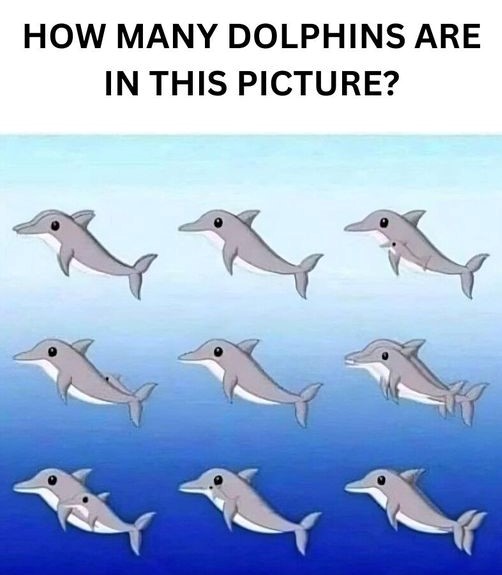If you’re looking for a fun and engaging way to keep your mind sharp, optical illusions and brain teasers are the perfect solution. These mind-bending puzzles not only provide endless entertainment but also give your brain a much-needed workout. Let’s dive into the fascinating world of optical illusions and brain teasers that will challenge and stimulate your mind.

What Are Optical Illusions?
Understanding Optical Illusions
Optical illusions are visual images that differ from reality, often causing us to see things that aren’t really there. These illusions trick our brains into seeing something that doesn’t align with physical reality, showcasing how our perception can be easily fooled.
Types of Optical Illusions
There are several types of optical illusions, including:
- Literal Illusions: Images that are different from the objects that create them.
- Physiological Illusions: Effects on the eyes and brain due to excessive stimulation.
- Cognitive Illusions: The result of unconscious inferences and assumptions.
The Science Behind Brain Teasers
How Brain Teasers Work
Brain teasers are puzzles that challenge our cognitive abilities. They require thinking, reasoning, and problem-solving skills. By engaging in these activities, we stimulate different parts of our brain, improving memory, focus, and mental agility.
Benefits of Brain Teasers
- Enhance Problem-Solving Skills: Regular practice with brain teasers can improve your ability to think critically and solve problems efficiently.
- Boost Memory: Puzzles can help strengthen memory retention and recall.
- Improve Concentration: Focusing on solving brain teasers enhances your attention span and concentration levels.
Dolphin Optical Illusion: A Case Study
The Dolphin Challenge
Let’s start with an intriguing optical illusion featuring adorable dolphins. Take a look at the image and try counting the number of dolphins. At first glance, you might only see a few, but if you give it a few more seconds, your eyes and brain will start registering more and more little dolphins.
Counting the Dolphins
Surprisingly, there are 17 dolphins hidden in plain sight. Some are cleverly camouflaged within each other:
- First Row: 5 dolphins
- Second Row: 6 dolphins
- Third Row: 6 dolphins
It’s fascinating how easily our brains can miss these details at first glance.
Popular Brain Teasers to Challenge Your Mind
1. The Classic Riddle
“I speak without a mouth and hear without ears. I have no body, but I come alive with the wind. What am I?”
Answer: An Echo.
2. The Coin Puzzle
You have two coins that add up to 30 cents. One of them isn’t a nickel. What are the coins?
Answer: A quarter and a nickel (the trick is that only one of the coins isn’t a nickel).
3. The Missing Dollar
Three friends decide to split a $30 hotel room bill. Each pays $10. Later, the hotel realizes the room was only $25 and gives $5 back. The bellboy, unable to split $5 three ways, gives each friend $1 back and keeps $2. Each friend has now paid $9, totaling $27, plus the $2 the bellboy kept. That’s $29. Where’s the missing dollar?
Answer: There’s no missing dollar. The $27 includes the $25 for the room and the $2 kept by the bellboy. The initial $30 has been accounted for.
The Impact of Puzzles on Cognitive Health
Mental Stimulation
Engaging in puzzles and brain teasers provides excellent mental stimulation. This helps keep your brain active and can even delay the onset of cognitive decline in older adults.
Stress Relief
Solving puzzles can also be a great way to relieve stress. They provide a distraction from everyday worries, allowing your mind to focus on the challenge at hand.
Social Interaction
Puzzles and brain teasers are also great social activities. They encourage interaction and teamwork, making them perfect for family gatherings or team-building exercises.
How to Incorporate Puzzles into Your Daily Routine
Morning Brain Teasers
Start your day with a quick brain teaser to wake up your mind. This can set a positive tone for the day and enhance your productivity.
Puzzle Breaks
Take short breaks during your workday to solve a puzzle. This can help refresh your mind and improve your focus.
Evening Relaxation
Unwind in the evening with a challenging puzzle. This can be a relaxing way to end your day and prepare your mind for a good night’s sleep.
Conclusion
Optical illusions and brain teasers are more than just fun distractions; they are powerful tools for keeping your mind sharp and engaged. By incorporating these activities into your daily routine, you can enjoy numerous cognitive benefits while having a great time. So, challenge yourself with some mind-bending puzzles and experience the joy of solving them.
What are your favorite optical illusions and brain teasers? Share them in the comments below and let’s see if we can solve them together!





